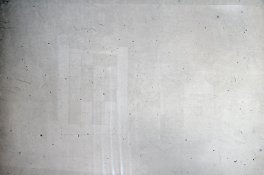If you would like to get an idea what processing Kodachrome is like, here is an exercise you can try. Reversal process a frame of B/W film using hair dye as the color developer. You need a hair dye that contains p-Phenylenediamine (PPD) and color couplers. These sort of dyes are pretty common - I used the brand "Touch of Gray" for my experiment. Most hair dye works on a similar principle as color film. (Or color film works on the same principle as hair dye.) The PPD will function as your color developer and the oxidized PPD will react with the coupler to form the dye.
I used a hand coated emulsion that I made. IDK if commercial film would work but it might. I was able to get a weak positive dye image. Maybe with tweaking and experimentation a better image would be possible. This worked the one time I tried it. YMMV.
Using one frame of film follow these steps:
1) Expose your frame in camera.
2) First develop the film using any developer you like. I used D-23. Under-developing might be a good idea.
3) Rinse the film
4) Now fog (or re-expose) using white light or a flash. I exposed for 3 minutes and this was likely way too long. If I did this again I'd use a flash. The re-exposure step make the remaining silver halides ready to be developed to metallic silver.
5) Mix your color developer. Fill a small container with DW. If your hair dye was in a tube like mine, put the tip of the tube under the surface of the water to avoid excess exposure to air. Squeeze some of the hair dye into the water. Top up the container if required and stir to mix. Don't worry about mixing too much because this mixture will not keep (sound familiar?). As the solution is exposed to air the PPD will oxidize and the coupler will couple with it and turn into dye, leaving the "developer" useless before long, say 20 minutes. Tightly covering the container will slow down the process.
6) Get the film into the "color developer." Leave the film in the color developer for about 15 minutes, agitating every once in a while. The PPD oxidizes by reducing the re-exposed halides. The oxidized developer reacts with the coupler to form the dye.
7) Pull the film out of the developer and rinse. The film will be totally black at this point.
8) Put the film into a bleach. You can use the C-22 ferricyanide type bleach found posted here on APUG. Let this sit for about 6 minutes or more.
9) Pull the film out of the bleach and rinse.
10) Put the film in a fixer and let all of the silver fix out.
11) After fixing, wash the film thoroughly and dry.
Any more questions on why nobody wants to do Kodachrome type processing? Remember steps 4 to 7 have to be repeated for all 3 colors if you can expose with the proper filters. Steps 4 to 8 have to be repeated if differential bleaching is being used.
After all that you should get a weak positive dye image. One problem is that hair dye often contains extra oxidizing agents and this, of course, causes all the gelatin to stain. I got this,

If you look hard, you can see the positive of the (fake) Macbeth chart I photographed. It has a white border and is on a clipboard. To the right is a box of washing soda, the "Touch of Gray" box, and a plastic bottle of isopropyl alcohol. You can barely make them out if you look really hard. Of course, the actual dye image is the brown that my hair used to be before I gave up on trying to color it.
Maybe someone could experiment and use funky colored cyan, yellow and magenta hair dye to pull off 3 color development. These colors are available. (You would find them in use in any high school.) I'm surely not saying "Kodachrome lovers of the world unite" but after a couple of cases of hair dye maybe it would work. As far as I am concerned, the fellow that managed to color process some K-64 was right on when he said to let the K-14 process rest in peace.














